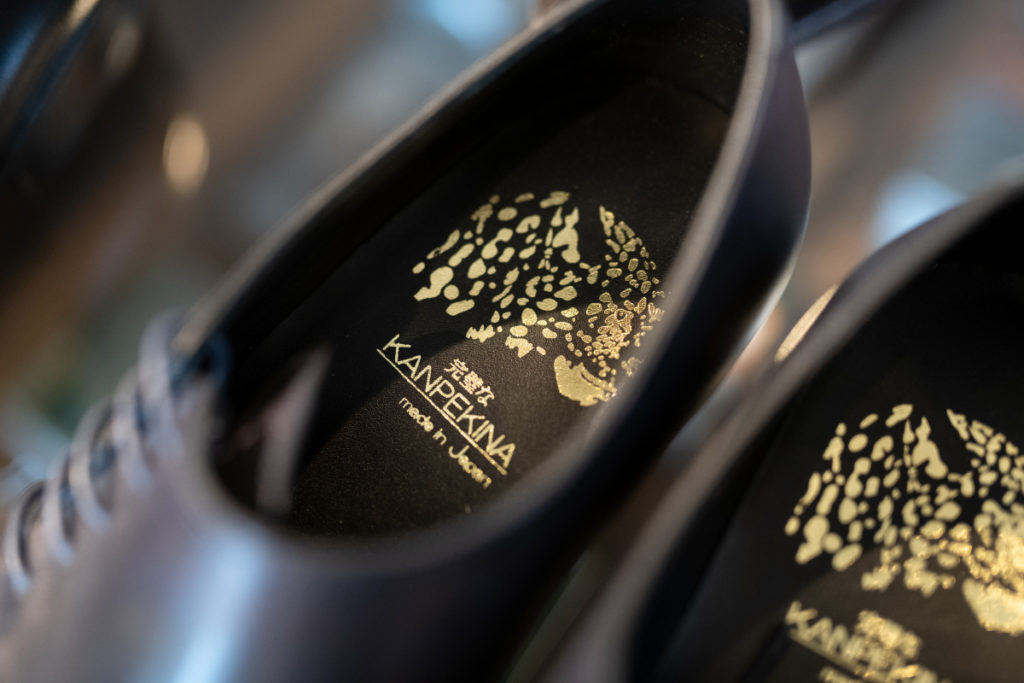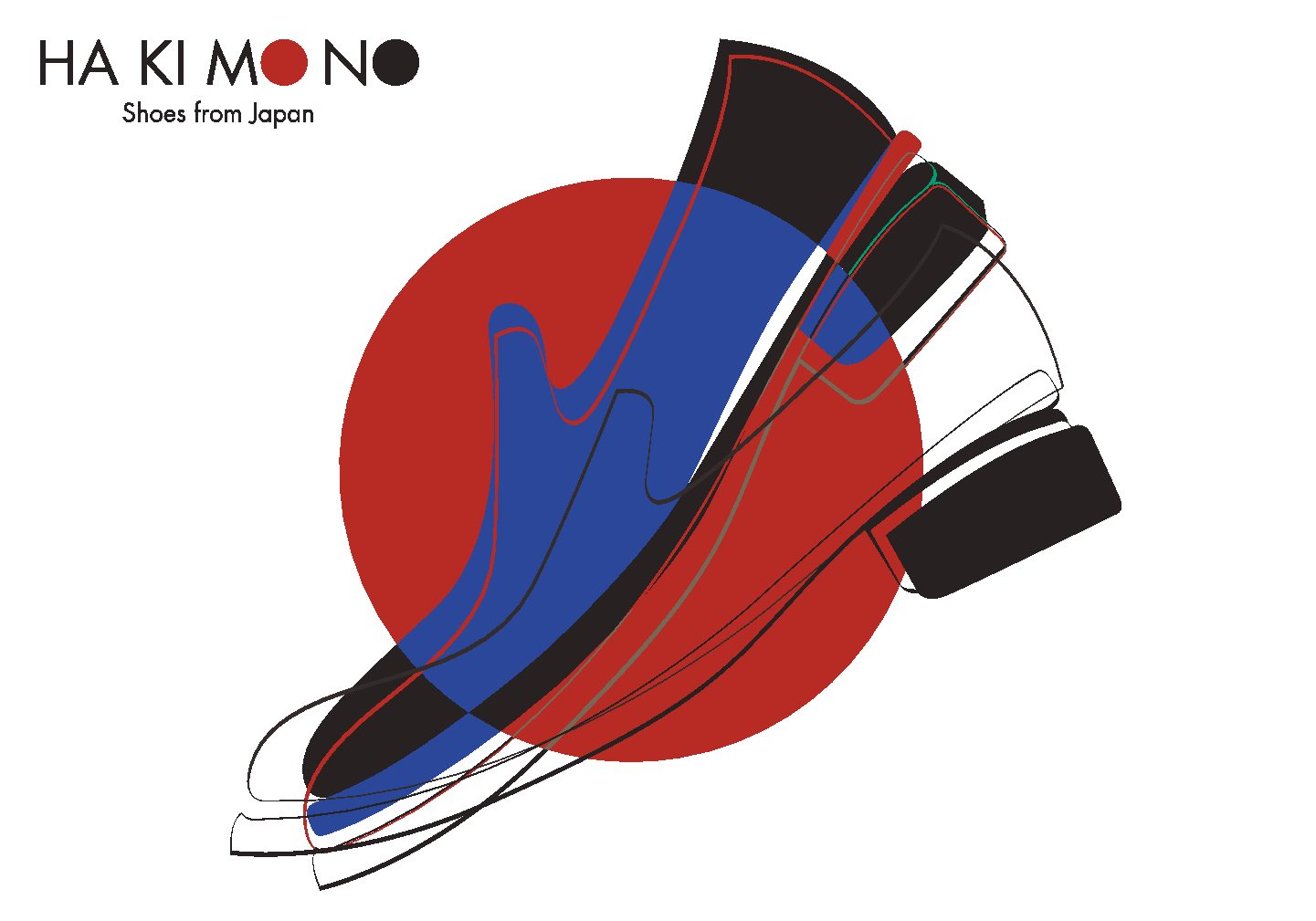HAKIMONO – The best of leather shoes made in Japan
Everyone knows the great European manufacturers of leather shoes: the Italians are renowned for their elegant designs and fine leathers, the French for their always chic and trendy style, the English for their impeccable manufacture and classic and aristocratic taste.
In short, to each (country) their own (shoe). But even beyond the borders of the old continent, you can actually find some excellent shoe-reprises: Japan, for example, where the manufacture of leather dates back to the Samurai era. This age-old tradition, which originally applied to the processing of sword sheaths and armor, has been handed down from generation to generation and is now applied to the manufacture of high quality and innovative leather shoes.
This ‘renouveau’ of the sector is made possible thanks to the support of the METI (Ministry of Economy, Trade and Japanese Industry). To promote it internationally, the METI has supported the creation of “HAKIMONO” – a Japanese term that literally means “something to wear on your foot” – a consortium that brings together different brands specialized in the Japanese footwear know-how, blending tradition and innovation.
From February 16 to 19 2020, MICAM in Milan (a leading international footwear industry exhibition) will welcome 11 consortium brands – FUGASHIN, Hiroshi Kida, H. KATSUKAWA, JOE WORKS, Kyoto Sasage, Lafeet, MARIEOHIRA, MIYAGI KOGYO, REGAL, RENDO, and KITEN – representative of this Japanese talent.
For the occasion, we take a look at four of these brands carrying Japan’s reputation in the production of leather shoes. Here are the history, the strengths and the values of each brand.
FUGASHIN
At the origin of FUGASHIN is the brand “Perfetto”, an Italian term meaning “Perfect”, chosen by the founder Kimiko Shimamura to symbolize her desire to produce quality shoes with excellent craftsmanship techniques. Shimamura launched Perfetto in Vietnam, but when the brand began to be popular abroad, she decided to change the name to KANPEKINA (“Perfect” in Japanese), so that it could be clearly identified as a Japanese craft production. The desire to enhance Japanese sensitivity and manufacturing tradition even more distinctly eventually came alive in the FUGASHIN brand. The current brand offers two ranges of footwear – one casual and one luxury – and two processing methods … to adapt to all feet and wallets. For customers who prefer soft, tailormade footwear that shapes to the foot, the brand offers the line manufactured with the Bologna or “bag” method: this process involves the separate application of the leather from the lining that is built “like a glove” on the shape of the shoe, and closed just like a bag on the foot. For lovers of sturdy and robust luxury shoes, FUGASHIN has created a range of shoes handmade with the Goodyear Welt technique (so-called because invented by the Englishman Charles Goodyear in 1832). The welt – a strip of soft leather that runs along the entire perimeter of the shoe – is sewn together with the insole and the upper and, subsequently, with the sole. With this method, the body of the shoe creates a better seal and ensures durability. This luxury range uses the most refined leathers and excellent craftsmanship.

KITEN
KITEN is a Japanese brand specialized in vintage and luxury footwear, made by highly qualified craftsmen with fine leathers and high-quality finishes. Initially started as a sports shoe brand, KITEN later expanded its product range and currently also produces elegant and casual shoes. The brand favors the use of fine leathers including Regina leather, produced in Florence and also used by Gucci. Among the most emblematic pieces of the brand are its leather boots manufactured with the Goodyear Welt technique – characterized by impeccable finishes and strength, to which KITEN adds an innovative technique to guarantee the lightness of the materials. It’s a top choice for adventurers who are looking for footwear that is durable and resistant but also comfortable and trendy, perfect for the city and in the wild.

JOE WORKS
While running a “classic” shoe company, the founders of JOE WORKS thought they could do better. They, therefore, created their brand with the intention of making quality footwear that was sturdy, soft and easy to wear.
JOE WORKS combines artisanal ‘savoir faire’ and Goodyear Welt manufacturing; it uses Italian and French leathers, a distinctive minimalist Japanese design – without too many seams, as well as a classic and sober British-inspired style. The essential element for the brand is undoubtedly comfort. Since the mechanically manufactured shoes are conventionally very similar and cannot adapt to all types of feet, JOE WORKS has decided to focus on handwork by creating each shoe to be bespoke, using wooden models reproducing the shape of the foot of each client. Each shoe, therefore, adapts perfectly to the curves of the client’s foot and guarantees optimal comfort to the person who has chosen it. This is the strong point of JOE WORKS which has recently allowed them to open up to new markets outside of Japan such as Europe, Canada, and Asia.

RENDO
After studying in London and traveling abroad to discover different manufacturing techniques and materials, Teppei Yoshimi returned to his homeland and created the RENDO brand, a name that means “collaboration” in Japanese. Based in the Asakusa district of Tokyo, his atelier is a real workshop, where artisans and designers collaborate and interact to reimagine industrial shoes by combining modern efficiency with the excellence of craftsmanship. RENDO follows all the stages of footwear production: from research to the design of models, from the creation of prototypes to the finished products. Particular attention is given to the study of the shapes and the shaving of the hides to make the shoes softer and adaptable to the curves of the foot. Numerous prototypes are tested to find the “perfect” shoe that combines a redefined design with refined lines and total comfort.
HAKIMONO is an unmissable display of the Japanese shoemaking excellence and uniqueness.
For these brands, the Italian proverb “Those who travel with golden shoes, could reach the end of the world” doesn’t seem too far off!

Article: Sara Waka
Edited by: Saya Busi
Photo: Daizaburo Nagashima







